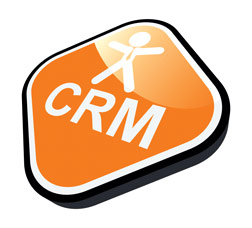 The question I most often get asked is: “How do I know if my marketing is working?” Thankfully, it’s not as hard as you might think, but it does take some planning.
The question I most often get asked is: “How do I know if my marketing is working?” Thankfully, it’s not as hard as you might think, but it does take some planning.
There are a few different ways to track the success of your advertising and marketing efforts, however, every solution requires that you employ some sort of system. If you don’t have a system, then you’ll have bad data and too many holes to know for certain if your marketing campaigns are working.
In this article we’ll cover how you can create direct methods to determine if your campaigns are working on a source-by-source basis. This starting point won’t give you all the nuances like multi-impressions, or the wackiness of the human mind and how it makes decisions, but it will give you the information you need to make smarter marketing and ad buying decisions.
Sadly, simply asking your customers, “How did you hear about us?” is not enough to merit good marketing tracking. Their answers tend to be influenced by more than one referral source, which means they can be inaccurate. For example, they might have first been made aware of your business name in a newspaper ad, but then later overheard it again on a radio spot, which is what solidified your business name in their mind. In this case they needed both impressions in both formats, because without the first visual impression, the radio ad probably wouldn’t have been enough to make your business name stick. How our brains commit something to memory is not always an easy path to chart. However, using a system like a CRM to tack leads and sales helps automate some of this process and ensure the referral source data is as accurate as possible.
Know if your marketing is working: use a CRM
 There are plenty of CRM options in the world. If you operate a straight-forward business than there are many open source CRM options work just fine for business that don’t require a lot of custom features. If you’re not using some sort of database system that enables you to track your leads to sales, than that’s where you need to start. If you don’t have good data, well… then you can’t really do anything to know if your marketing is working or not.
There are plenty of CRM options in the world. If you operate a straight-forward business than there are many open source CRM options work just fine for business that don’t require a lot of custom features. If you’re not using some sort of database system that enables you to track your leads to sales, than that’s where you need to start. If you don’t have good data, well… then you can’t really do anything to know if your marketing is working or not.
If you’re not a computer geek, don’t worry about it. You don’t have to use all the features of a CRM, and most don’t require too much set up. Just make sure you’re diligent on the key factors that you need in order to track marketing: name, referral source(s), inquiry date, sale date(s), revenue from sale(s).
Know if your advertising is working: unique phone numbers and landing pages
The first thing I ever tell a new client is to show me their landing pages: the unique webpages that are designed specifically to support an ad campaign. So if you run a brand-identity campaign on Website A, all the clicks from those ads go to a landing page built specifically for that campaign on Website A. With that you can use your Google Analytics account to track traffic, and hard code inquiry forms to ensure the referral source is accurate.
But what it you don’t run online marketing campaigns? How do you know if your ads are working if they’re on the radio or television?
First, think about many TV ads you’ve seen that have something like “Go to www.mywebsite.com/tv/” … that’s a landing page for the TV ad that you can track the same way as if it were a click from an online banner ad.
What about phone numbers to track marketing campaigns? In these modern days of web-based virtual phone numbers, it’s very easy and very inexpensive to have dedicated phone numbers for each of your marketing campaigns.
“In the old days” this was a service you had to pay through the nose to a marketing firm to do. Today, however, all you need to do is sign up with a company like e-voice, vumber, or grasshopper. For a small fee pick a couple toll free, or local numbers that forward to your main business line or cell phone.
Use the virtual phone numbers in your TV and ad campaigns so that you can track the calls. Most services restrict the basic accounts (around $10-$15 per month) to one or two phone numbers… but you can change them whenever you want, or upgrade to get more if you are running a lot of different ad campaigns that you need to track by incoming calls.
Now that you have landing pages and virtual phone numbers, you have a lot more accurate referral source data coming in. You know which marketing and ad campaigns are generating which leads, so you can put that data into your CRM, which then can make all sorts of fancy-looking reports for you.
That’s enough to get you lead counts… but leads don’t always result in income. To know if your marketing is working, you need to take the information all the way through the cost and revenue stages.
Know your marketing is working: know cost per lead by source
Figuring the cost of each marketing campaign is easy: look at the invoice (don’t forget to include any other costs that might be related like design or production of the ads). For this you don’t need anything fancy, just open an Excel sheet, enter the name of the source in column A, and the lead count for that source in column B that you were able to gather from your landing pages, virtual phone lines, and other methods you use to get referral sources. Important note: if a custom says, “I found you on facebook” make sure to ask them the question again, “anywhere else, too?”. Unless you’re running ads as well as have a facebook page, chances are the referral trail is a little longer (i.e. friend / word of mouth, then they “saw you on facebook”).
In column C enter the cost for each respective ad source for the reporting period.
What for column D? Set it so it divides the cost by the lead count which will give you the cost per lead for each individual source. This will give you a general idea of how much you need to spend in each advertising source in order to get one lead. Another important note: this is not a perfect number. As we’ve seen, sometimes ad campaigns work with one another to solidify your business name in a person’s memory. It is a decent representation, though, from which you can make decisions. Also, a low cost per lead does not necessarily mean it’s a great place to advertise and you should immediately throw more money into that source. The final decision if your ad campaigns are working is based on the revenue they create, not just the leads they generate.
Know your marketing is working: know revenue by source
This is the golden ticket. You’ve done your legwork by setting up your CRM and using tracking methods in your campaigns. That makes it possible to do the final step to really know if your marketing is working by adding the final three columns to your Excel sheet: total revenue by source, total profit by source, and average revenue per lead.

Simple ad report by source. (Remember this profit number does not take into account any other costs related to sales or operations.)
Using your CRM, sort all your sales based on the referral source. Depending on how much you are using it (i.e. are you putting sales numbers into the CRM or not), then you might be able to get a quick report showing exactly how much revenue came in from each marketing campaign. If you’re not using the CRM that much, though, that’s OK. It just means you need to spend a little more time with your receipts to finish the job.
As you calculate the total income by source, enter it into column E, “Revenue”, in your “Is My Marketing Really Working” Excel sheet.
Set column F so it subtracts the ad cost from the revenue (column E – column C). That gives you a very rough idea of profit by source. Keep in mind that doesn’t take into account the individual profit margin on the products each person buys. It’s just “an idea” that your brain can use to get an impression.
Finally, set column G so that it divides the profit by the lead count (column F / column B). Like the above, this is not a wholly accurate number of profit by source, but it gives you an general idea of the performance of the ad campaign.
Know your marketing is working: add more data
All of the above worked only with leads by source. The more you employ all the features of a CRM, the more you will be able to make that data more accurate. The first action to take would be to add customers by source (on top of just leads). By adding that to your report, you can get a more accurate impression of profit and cost. Moreover, that will tell you one very important thing that the basic report we created above does not do: do the leads from that marketing source convert to customers, or does it only create a lot of bad leads? If you have a referral source that generated a lot of leads, but no income, then as far as the bottom line is concerned, that was a waste of money (of course, you’d want to look more into the reasons why those leads didn’t convert).
Yes, there are many more nuanced influences on what makes someone turn into a customer based on your ad campaigns. As mentioned towards the top, it often takes more than one impression to make someone remember your business. To understand how sources interact you need to experiment more (i.e. stopping or boosting one source to see if it affects any others), but the basics above at least give you a must clearer idea of direct results from marketing campaigns, as well as prepare you so that you can start experimenting more and tracking the results.
Know your marketing is improving: A / B test ad campaigns
 All the work you’ve done thus far has helped put a system in place to track specific leads through to sales. Now you’re ready to improve your marketing campaigns even more by A/B testing your marketing messages and materials.
All the work you’ve done thus far has helped put a system in place to track specific leads through to sales. Now you’re ready to improve your marketing campaigns even more by A/B testing your marketing messages and materials.
Examples of A/B Testing:
- Run two radio ads with different offers or “production vibes”. Each has its own landing page and virtual phone number. See which one wins.
- Create two different banner campaigns for online advertising. Each ad clicks through to a different landing page so you can identify which is which, and which is more effective.
- When you know which banner campaign is better: use that option in your next campaign, but this time use different landing pages. Each page has a different design and different call to action. See which one wins.
- Send out two different mailers with different offers and unique virtual phone numbers…. see which one wins.
As you might have guessed, you can optimize every step of your ad campaigns and sales this way; from the initial ad all the way through to the specific salesperson who is best suited to close a deal based on product and referral source. Every. Single. Step. If you optimize each one, then the end result will be: more sales.
How do you know if your marketing is working? By working at it. 😉 Be smart and don’t hope. Use the tools that exist to collect the data you need to track your sales process, then you will always know if your marketing is working, and never have to ask that question ever again.








